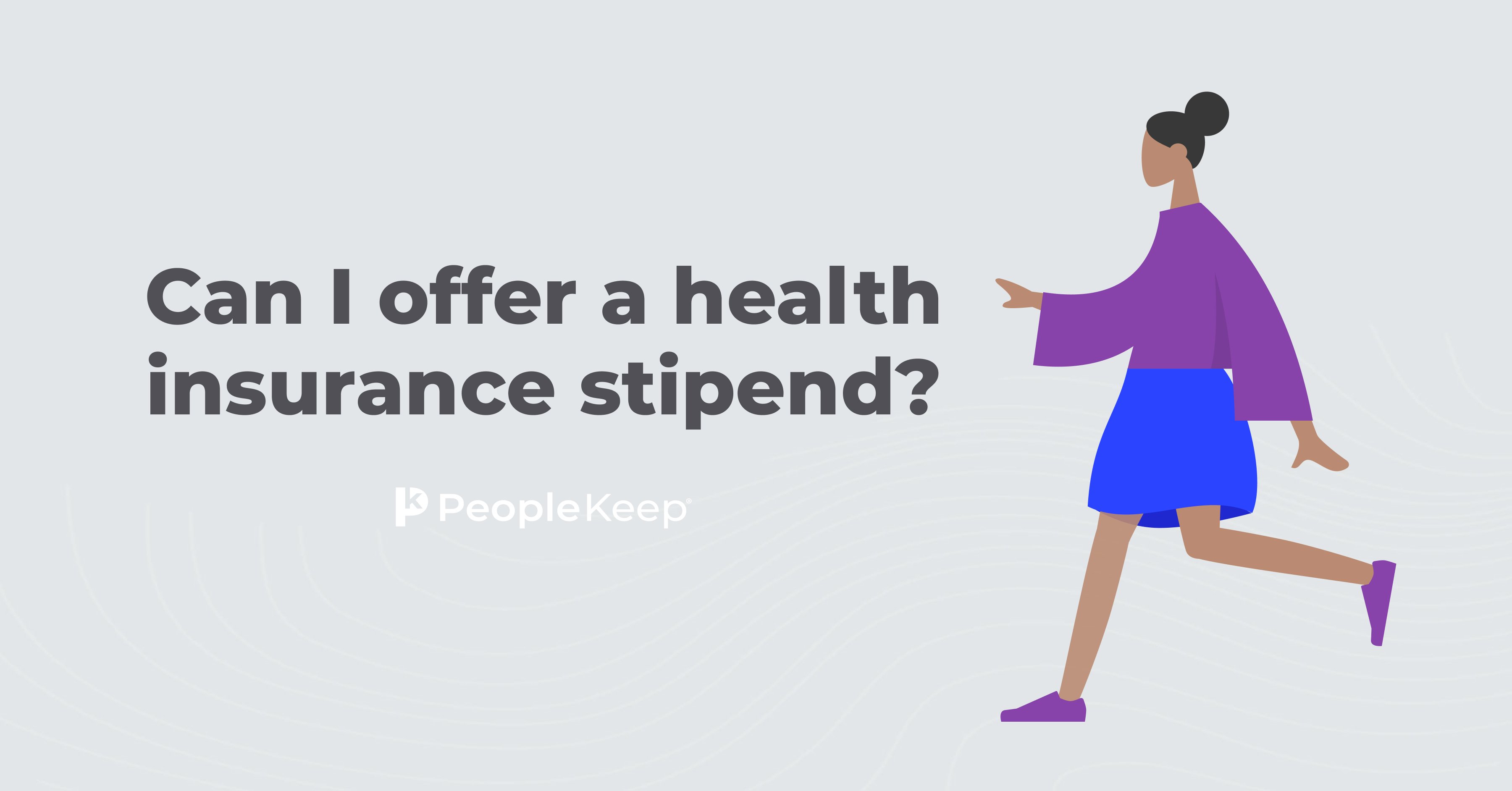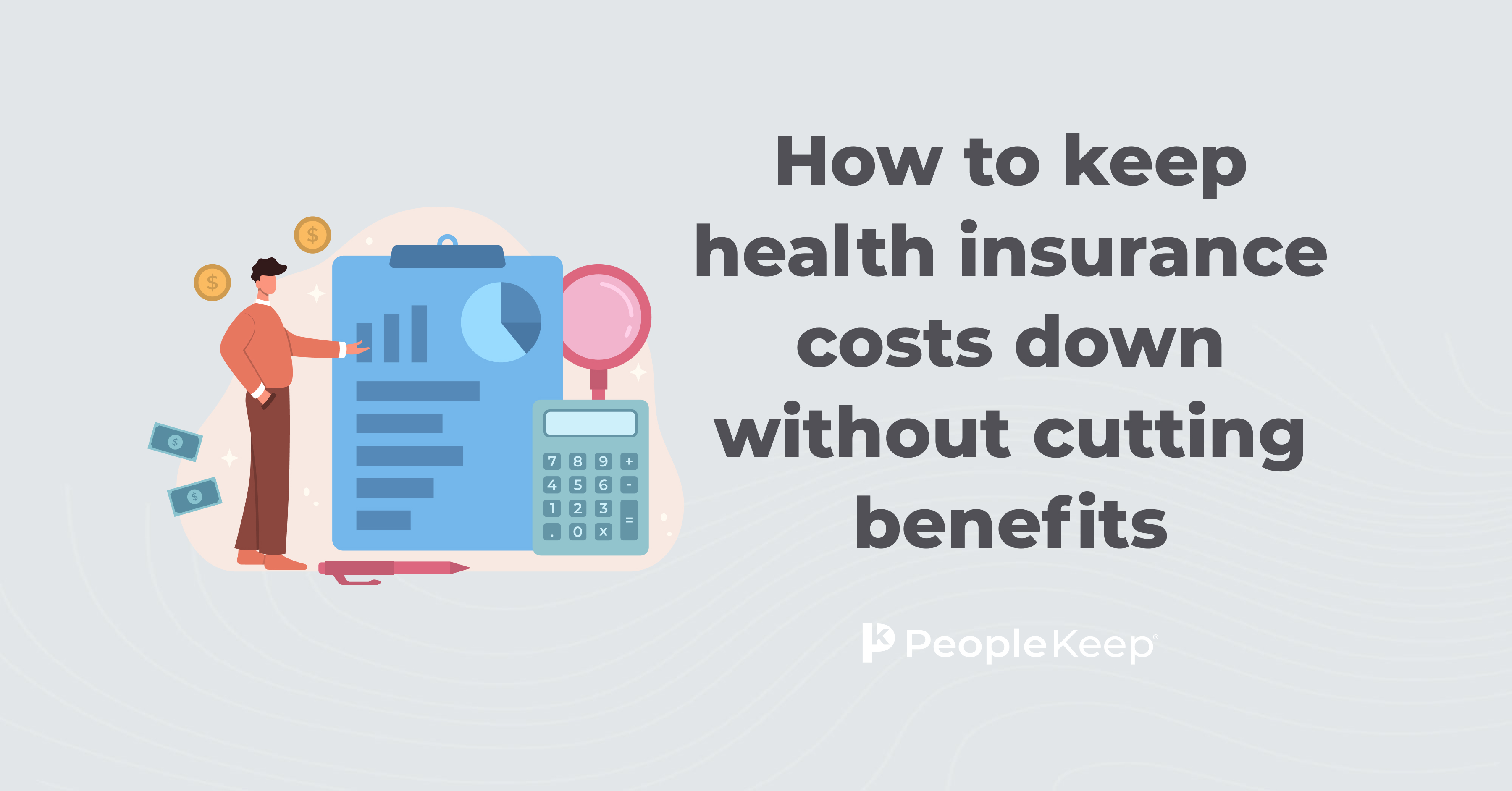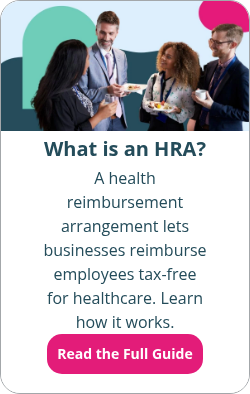Is health insurance reimbursement taxable?
By Chase Charaba on January 12, 2024 at 8:30 AM
There are many options to choose from when reimbursing employees for their health insurance expenses. Due to the rising cost of health insurance, many business owners are switching from traditional employer-sponsored group health insurance to personalized benefits.
Benefit reimbursements are a great way to save organizations money on healthcare expenses and provide eligible employees with a more personalized benefits package. However, some health insurance reimbursements are taxable while others aren't.
With so many different options, it can be hard to know which health insurance reimbursements are taxable and which aren't.
This article will cover two of the most popular types of healthcare reimbursements: health reimbursement arrangements (HRAs) and health stipends. We'll explore which benefits are tax-free and which count as taxable household income.
Key takeaways from this blog post:
- An HRA allows employers to reimburse employees for health insurance and medical expenses in a tax-advantaged way.
- In order to receive the tax benefits, an HRA must comply with IRS rules and have formal plan documents.
- Health stipends provide a taxable way to reimburse employees for healthcare expenses.
Is an HRA reimbursement taxable?
Under Internal Revenue Service (IRS) rules1, employers can reimburse their employees for health insurance and qualifying medical expenses in a tax-advantaged way. The most prominent vehicle for doing so is an HRA.
When an HRA complies with federal rules, employers can reimburse medical expenses, such as health insurance premiums, with money free of payroll taxes for both the employer and employee. An HRA is also free of income tax for the employee.
To get the tax benefits of this health plan, however, an HRA must follow IRS procedures, including strict rules about setting up formal plan documents.
HRA requirements
The IRS has clear rules governing how different types of HRAs work and how employers must set them up to comply.
For eligible taxpayers to receive benefits, an HRA must meet the following requirements:
- It must be 100% employer-funded (employees can't contribute)
- Even if the employee agrees to it, the organization can't fund its employer contributions through wage deductions
- Employees must have minimum essential coverage (MEC) to get reimbursements free of income tax
- For most types of HRAs, you must have MEC to participate. For example, an individual coverage HRA (ICHRA) requires an individual health insurance plan. All individual plans from the state and federal marketplaces qualify as MEC. Additionally, for integrated HRAs, ACA-compliant group plans qualify as MEC.
- If employees don't have MEC with a qualified small employer HRA (QSEHRA), they must report reimbursements as taxable income at the end of the year.
- Formal plan documents must define qualified medical expenses
Certain types of HRAs, like the qualified small employer HRA (QSEHRA) and the excepted benefit HRA (EBHRA), have maximum annual employer contribution limits, while others, like the individual coverage HRA (ICHRA) and the group coverage HRA (GCHRA), don't have annual contribution limits.
HRA compliance
To be compliant, healthcare reimbursement plans must have formal plan documents that describe how the plan is managed, what medical expenses are reimbursable, and what documents are required to demonstrate compliance.
If an employer doesn't want to set up formal plan documents and procedures to receive these pre-tax benefits, they can just give employees a raise or a health insurance benefit stipend. However, the organization will pay payroll tax on these extra wages, and employees will pay payroll and income tax.
How does an HRA work?
Eligible employees can purchase individual health insurance coverage from the federal or state marketplace with an HRA. Employees pay for their own health expenses and premium costs upfront and request reimbursement for them.
Business owners set monthly allowance caps for reimbursement and design their plans to reflect which expenses they want to be eligible for reimbursement, such as healthcare premiums only or all eligible expenses.
Once employees submit proof of their medical bills and other qualifying expenses, employers can reimburse them up to their available allowance.
This makes an HRA an incredibly flexible and affordable coverage option, especially if you have employees with chronic conditions or who need frequent medical treatment.
Three of the most popular types of HRAs are:
- The QSEHRA: A great option for organizations with less than 50 full-time equivalent employees (FTEs). The IRS caps annual employer contributions.
- The ICHRA: Available to organizations of all sizes, an ICHRA allows for customization across different employee classes, such as full-time employees, salaried workers, and more. It also allows you to satisfy the Affordable Care Act's (ACA) employer mandate for applicable large employers (ALEs).
- The GCHRA, also known as an integrated HRA: The GCHRA is an option for organizations that want to supplement their existing group health coverage. A GCHRA doesn't allow you to reimburse employees for health insurance premiums, but employees can use it on out-of-pocket expenses that the group health plan doesn't fully cover.
How are healthcare stipends taxed?
HRAs aren't the only option for reimbursing employees' healthcare expenses. There are also employee stipends.
Unlike an HRA, the IRS considers healthcare stipends taxable income. That's because stipends aren't a formal employer-sponsored health insurance plan and don't have as many regulations for qualified employee expenses. Similar to bonuses, stipends aren't tax-advantaged and count as taxable wages earned by the employee. Additionally, there are no employer contribution limits with stipends.
When employers reimburse out-of-pocket expenses or medical insurance coverage premiums using a stipend, they pay payroll tax on those funds. But you aren't required to withhold Social Security or Medicare taxes. Employees are responsible for paying these taxes on top of their income tax.
Because Form W-2 documents include stipends, employees should set aside the amount needed to pay their taxes.
Because the ACA prohibits employer payment plans (EPPs), you can't require your employees to use their stipend on a health insurance plan. You also can't ask your employees to submit proof of insurance or receipts for any items listed in IRC § 213(d).
A stipend also doesn't satisfy the ACA's employer mandate for organizations with 50 or more FTEs. That means larger organizations should offer a group health plan or an ICHRA to comply with the law.
Why would you choose to offer a taxable health stipend?
Stipends have fewer regulations associated with them, making them a simple benefits solution for small organizations.
Your employees don't need medical insurance to participate in a stipend. This allows for stipends to cover an array of healthcare expenses for employees, no matter if they have an existing insurance policy, a health savings account (HSA), or flexible spending accounts (FSAs).
It also allows your employees who participate in premium tax credits to take advantage of these benefits without reducing their premium tax credit by their allowance amount or having to give it up entirely.
For those who already have a group health insurance plan or an HRA, taxable stipends can help employees with additional out-of-pocket expenses. They're a great financial support system for employees with various medical bills for chronic conditions or simply want more coverage to pay for doctor visits or over-the-counter medicine. However, they'll have to pay taxes on these extra allowances.
Conclusion
The tax-advantaged nature of HRAs makes them a good option for employers who want to offer personalized, flexible health benefits to their employees. Compliance is vital, however. Without it, employers and their employees can miss out on tax savings.
On the other hand, a taxable healthcare or wellness stipend is a great benefit that goes hand-in-hand with offering health coverage.
Both stipends and HRAs allow for greater flexibility and cost control than traditional group health insurance policies while empowering your workforce to use their allowances on out-of-pocket expenses and health insurance premiums.
If you want to offer an HRA, benefits administration software like PeopleKeep can help. With PeopleKeep, organizations can set up and manage a fully compliant plan in minutes.
This blog article was originally published on November 30, 2018. It was last updated on January 12, 2024.
1. https://www.irs.gov/newsroom/health-reimbursement-arrangements-hras
Check out more resources
See these related articles

Can I offer a health insurance stipend?
Interested in offering a health stipend in lieu of health insurance? Learn how stipends work, their tax implications, as well as other tax-free options.

Types of employee reimbursements
Explore the different types of employee reimbursements, like travel, healthcare, and more. Learn how reimbursements benefit both employees and employers.

How to keep health insurance costs down without cutting benefits
Want to save money on health insurance without sacrificing coverage? Discover effective strategies to reduce health insurance costs without compromising benefits.



